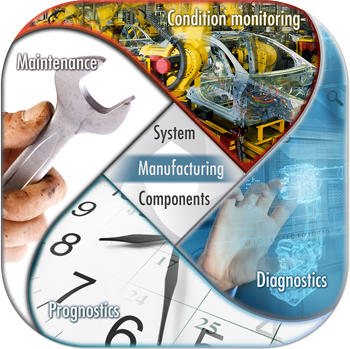
In today's increasingly complex manufacturing operations, Murphy's Law is only an unexpected hiccup away—anything from a data error to an errant vibration to a dulled cutting tool can undermine production. But in a future with fully effective sensing and information technologies that anticipate and avert potentially harmful process spasms, everything that might go wrong, simply could not.
Measurement Science Roadmap for Prognostics and Health Management for Smart Manufacturing Systems,* a new report generated for the National Institute of Standards and Technology (NIST), charts a course toward this ideal. The new roadmap is based on input received during a 2014 workshop of industry, university and government experts on prognostics and health management (PHM) technologies, systems and practices.
Prognostics—the estimation of the remaining life of an equipment item, subsystem, or system—and health management methods aim to maintain breakdown-free manufacturing production at top efficiency. Using a range of sensing technologies, these methods monitor the performance and operating conditions of equipment and systems, assess their health, and predict how long an operation can continue to perform as intended. Knowing when faults are likely to occur permits equipment to be repaired or replaced with little to no interruption. Should faults occur, however, PHM can be used to diagnose the root cause.
"Overall, the objective of PHM is to provide timely actionable information to enable intelligent decision making for improved performance, safety, reliability and maintainability," explains mechanical engineer Brian Weiss, who leads NIST research on PHM for smart manufacturing systems.
PHM techniques are used effectively in several industries, including automotive, aeronautics and heavy equipment. And NASA employs PHM in managing the International Space Station.
But these PHM implementations tend to be unique to specific organizations or arrangements of manufacturing equipment (sometimes involving proprietary solutions). Even within companies, according to several workshop participants, PHM applications tend to be custom, exclusive to single units or operations.
NIST convened the roadmapping workshop to provide national guidance for short- to long-term targets for its research efforts and others aiming to enable peak overall equipment effectiveness—the ideal of operating at full capacity all the time with zero scrap. A shared aim is to develop modular PHM capabilities that can be applied across organizations and industries and, ultimately, designed into equipment and processes.
One hurdle is acquiring useful data to support the development of reliable "physics-based" indicators of failure and pre-failure conditions that can be incorporated into PHM algorithms and analytics. The report explains that the ongoing challenge is how to generate accurate data for PHM without damaging equipment or impacting productivity. In addition to indicators and metrics, collecting useful data would aid efforts to develop uniform standards as well as PHM modeling and simulation tools.
In all, the new roadmapping report presents action plans for 13 high-priority research and development topics critical to incorporating advanced PHM capabilities into smart manufacturing processes. These include developing or achieving:
- a full spectrum of process sensors, along with interface and interoperability requirements;
- standards, taxonomies, and open-source architecture to enable plug-and-play PHM implementations;
- methods and metrics to assess PHM performance;
- PHM as an equipment design feature; and
- enterprise-wide PHM for maintenance planning.
* Measurement Science Roadmap for Prognostics and Health Management for Smart Manufacturing Systems, August 2015. (Report prepared for NIST by Energetics Incorporated) Available at: https://dx.doi.org/10.6028/NIST.AMS.100-2.

